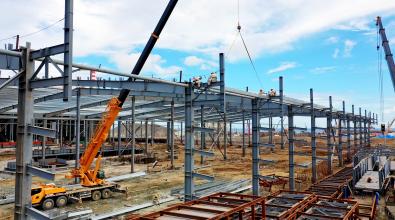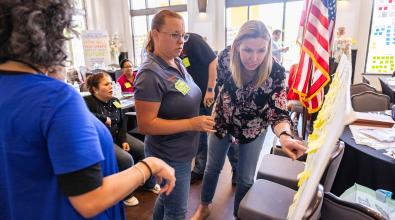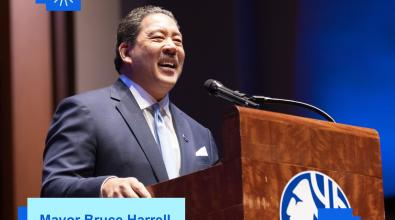Fit to purpose: How cities are setting themselves up to be more effective

Listen to This Article
Cities around the world have become far better at understanding what works and at spotting what’s coming next. They collect richer data, run more evaluations, and use foresight tools to anticipate change. But many still face a crucial challenge: turning that awareness into action.
That gap matters. Knowing which housing strategies are effective or that economic forecasts call for thousands of new units won’t automatically produce more homes. What counts is whether a city is organized to quickly turn those insights into new policies, plans, and delivery approaches that make a difference for residents.
That realization is prompting some city leaders to take a closer look inward—at how their own structures help or hinder action. They’re not reorganizing just to be leaner or more efficient, but to become more responsive: to connect strategy, data, and delivery so that good information leads to better results.
Two U.S. cities, Boise, Idaho, and Austin, Texas, are showing what that can look like in practice.
Taking the next step with evaluation.
In 2022, Kyle Patterson took on a new role as Director of Innovation and Performance in Boise, using data, design, and experimentation to tackle local challenges. His team helped departments test ideas and measure results, but they were often brought in after goals had already been set. That meant their insights could not always shape strategy or guide timely course corrections when policies fell short.
That’s why, over the past year, Boise Mayor Lauren McLean has created and funded a new agency called the Department of Organizational Effectiveness that brings together strategic planning, project management, performance analytics, and innovation personnel into one shop. A critical objective: ensuring that the city doesn’t just evaluate programs, but acts on that evaluation. “We're saying good policymaking doesn't end at a council vote,” Patterson, who along with Mayor McLean has participated in the Bloomberg Harvard City Leadership Initiative, explains. “It's a continuous feedback loop.”
One of the department’s early priorities has been affordable housing. When Patterson’s team examined the impact of new zoning incentives, they found that a policy designed to encourage affordable or sustainable construction by allowing developers of those projects to build an extra floor or create fewer parking spaces was not changing behavior. Developers who used the incentives were largely those already planning to build affordable units.
By aligning strategic planning, performance improvement, and innovation, the new department has been able to redesign the approach. Patterson’s team has proposed a new menu of incentives that better reflect local development patterns and are now under review by the city council. The process has been faster and more evidence-based than before.
“It is about measuring what is working and creating feedback loops where we ask, ‘Is this policy doing what we think it should? If not, how do we change it?’” Patterson says.
Boise’s experience shows that innovation is not just about generating ideas or analyzing data. It is also about organizing government so that those insights lead directly to action.
Planning ahead with purpose.
Many cities engage in scenario planning and tabletop exercises geared at helping them better anticipate everything from supply-chain disruption to cyberattacks. But according to Daniel Culotta, who serves as assistant director of a new Austin agency called the Department of Budget and Organizational Excellence, these activities haven’t always prompted a lot of action.
“Those exercises are great, but we haven’t had ways to make that foresight meaningful to city departments and city operations,” he explains.
That’s one of the reasons the city reorganized its budget staff, strategic planning personnel, and innovation leaders to create a new shop. Culotta acknowledges the perpetual debate about where innovation functions are best housed inside local government, and that combining budget and innovation teams is not, in and of itself, novel. But he says that what’s key in Austin is that, by bringing innovation staff into regular and direct partnership not just with budget but also with long-term planning staff, the city is able to give its foresight work some teeth. “We can much more quickly and effectively sense, understand, resource, and act on challenges and opportunities,” he says.
One of the ways the new team is putting this into practice is by working with nearby universities to develop a new digital tool that will, in Culotta’s words, “let any department take those foresight scenarios and translate them into operational and budgetary impacts, and be able to plan ahead and actually use that information.”
For example, he says, sanitation officials could use the tool to understand how rising temperatures may affect equipment performance. “Do we need to adjust maintenance schedules, replacement plans, and purchasing protocols to ensure we're maximizing efficiency, safety, and performance?” he asks. “And if so, what are the specifics of those changes that the department can start to plan for and implement?"
Measuring what works and anticipating what is coming next are both hallmarks of local government innovation. In that sense, neither Boise nor Austin is pursuing new information. What sets them apart is how deliberately they are positioning themselves to act on that information and to apply it in ways that matter.
As Culotta puts it, “We needed to combine some elements of different capabilities in the city to be more effective.”


